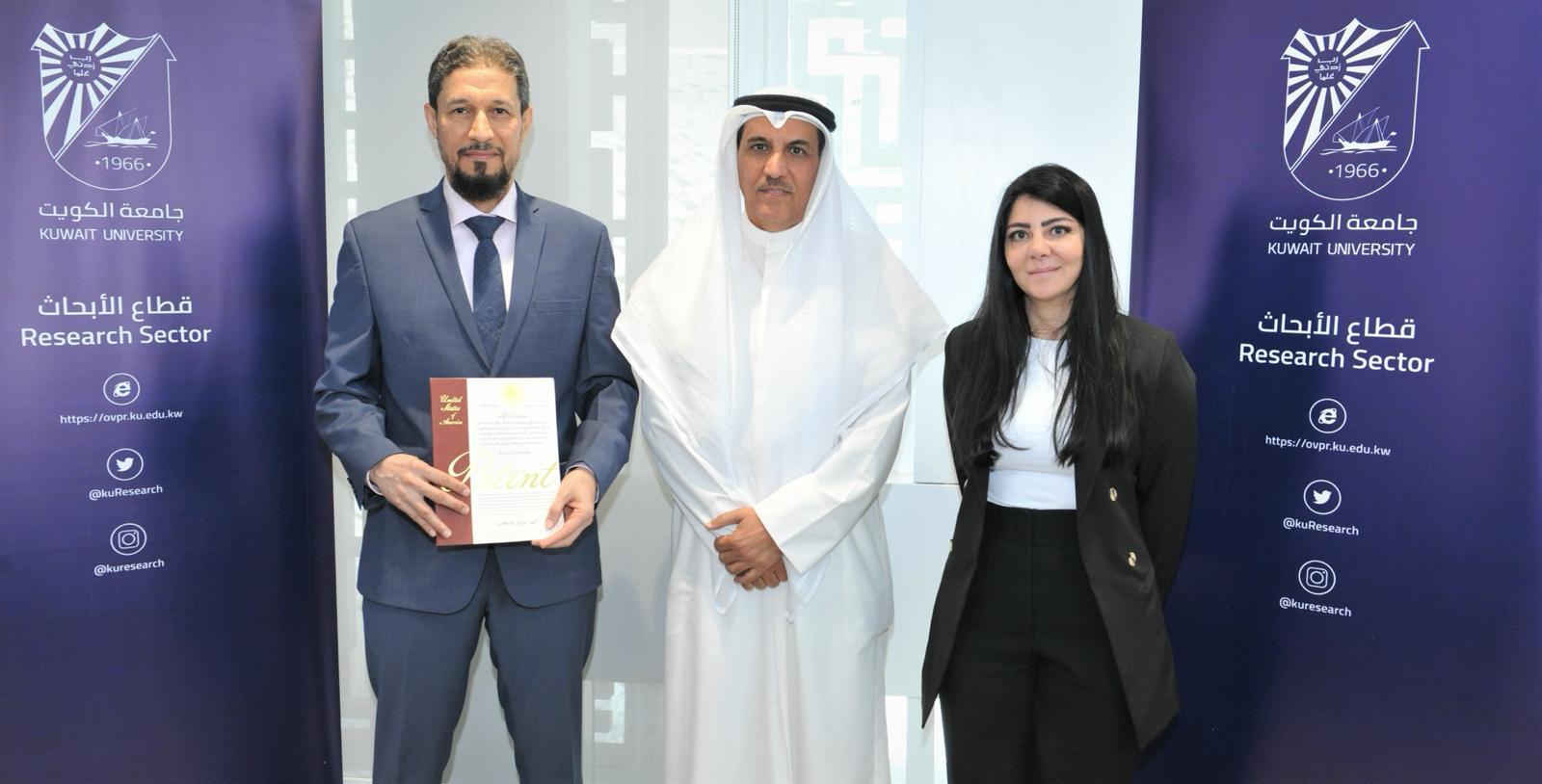
The Office of Patents and Intellectual Property Rights at the Research Sector announced a new registered patent in the field of energy production titled: "Confined Plunging Liquid Jet Reactor (CPLJR) with an Annular Air Lift Column and Sieve for Power Generation". On this occasion, the Patents Office honored the inventor, Prof. Bader Shafaqa Al-Anezi, who is the first Kuwaiti to obtain 25 patents registered at United States Patent and Trademark Office.
The Acting Vice President for Research, Prof. Othman Al-Khudher, congratulated the inventor on his accomplishment and expressed KU's pride in his outstanding scientific and research efforts. He further emphasized the important role of the Patents and Intellectual Property Rights Office at the Research Sector in fostering inventors and facilitating patents registration, enhancing Kuwait University ranking.
Prof. Al-Khudher also mentioned that the enormous efforts of the RS have encouraged researchers to submit applications for patenting their distinguished research. He also complemented the devoted research community and scientists who obtained innovative patents and significantly contributed to promoting development in Kuwait.
On her part, Dr. Haneen Al-Ghabra, Assistant Vice President for External Research Collaboration and Consultations, stressed on the role of the RS in supporting inventors as part of KU's policy of promoting scientific research and innovation by providing financial and technical support to encourage inventors develop and transform their ideas into effective inventions.
Meanwhile, Prof. Bader Shafaqa Al-Anezi said that as shown in previous studies on air entrainment plunging liquid jet reactor, deeper bubble penetration was achieved utilizing a longer downcomer. As a result, the contact time between the bubbles and the water in the downcomer increased. This enhanced oxygen mass transfer rate from the gas phase (air) to the water phase. Results obtained, previously, showed that the mass transfer in the downcomer was high and the gas-liquid stream leaving the base of the downcomer was almost saturated with oxygen (> 90%). This means that no further mass transfer, and energy is expended without any further transfer of oxygen. In order to overcome this situation, the idea of collecting the gas-liquid flow is proposed, leaving the bottom of the downcomer and contacting the bubbles with fresh water to enable further mass transfer. This can be achieved by having an annulus (external tube, around the downcomer). The hydrostatic pressure gradient difference between the bubbly flow in the riser and the surrounding clear liquid (in the tank) caused by the density difference induced a water flow (Qin) from the bottom of the riser, which diluted the gas-water stream leaving the base of the downcomer and thus restores the mass transfer driving force. This is expected to be done with no increase in the energy input costs.


 Colored
Colored Grayscale
Grayscale

